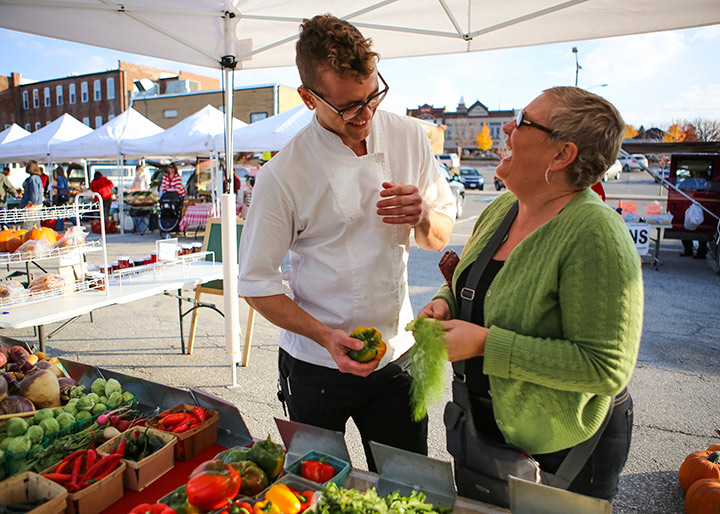Home neighborhood walkability motivates older people to physical activity
Walk-friendly environmental design may provide opportunities for physical activity in old age, according to a recent study conducted at the Gerontology Research Center of the University of Jyväskylä. However, it is important that older adults are aware of attractive environmental factors in their neighborhood, especially when mobility function starts to decline.

Getting involved in community activities combats social isolation for older citizens. Ziptopia
University of Jyväskylä March 30, 2017
Physical activity helps to maintain health and function. In old age, physical activity takes place mostly in the home neighborhood. Thus it is important to know if there are attractive environmental features in the neighborhood to motivate older adults to physical activity also when they experience physical limitations, Senior Researcher Erja Portegijs explains.
The results of this study show that physical activity was higher in participants living in a neighborhood with a higher walkability. The walkability index reflects opportunities to walk to different destinations, e.g. for shopping and meeting people. The walkability index is an objective measure that can be calculated from open-source geographical information (maps).
The results also show that participants reporting higher numbers of environmental facilitators for outdoor mobility also reported higher levels of physical activity than those perceiving fewer environmental facilitators in their neighborhood. For example, nearby shops, nature and suitable walkways motivated participants to outdoor mobility. The relationship was especially strong for those with limited physical function.
It seems that perceiving attractive factors in the environment becomes especially important for physical activity when mobility function starts to decline and people may need to choose more carefully how to use their energy during the day, Portegijs concludes.
In total 839 inhabitants of Jyväskylä and Muurame in Central Finland participated in this study. The study participants were 75-90 years old and were interviewed at home. Participants were grouped according to the score obtained from a mobility test. Physical activity was assessed by a self-report questionnaire and with an accelerometer that was worn for one week.
All participants were asked about environmental factors that motivated them to go outdoors. By mapping the home address and studying the area up to 1 km from home, the researchers calculated an objective walkability index for their home neighborhood. The index is based on land use mix, population density and road network connectivity in the area.
| This research was funded by the Finnish Ministry of Education and Culture and the Academy of Finland. The Gerontology Research Center (GEREC) is a joint effort between the University of Jyväskylä and the University of Tampere. |
 Source University of Jyväskylä via Medical Xpress
Source University of Jyväskylä via Medical Xpress
| References |
Physical Limitations, Walkability, Perceived Environmental Facilitators and Physical Activity of Older Adults in Finland, Portegijs E, Keskinen KE, Tsai LT, Rantanen T, Rantakokko M. Int J Environ Res Public Health. 2017 Mar 22;14(3). pii: E333. doi: 10.3390/ijerph14030333.
Barriers to and facilitators of physical activity program use among older adults, Bethancourt HJ, Rosenberg DE, Beatty T, Arterburn DE. Clin Med Res. 2014 Sep;12(1-2):10-20. doi: 10.3121/cmr.2013.1171. Epub 2014 Jan 10.
Also see
How Cities Are Changing as The Population Ages Ziptopia
Why a walk in the woods really does help your body and your soul The Conversation
AARP Network of Age-Friendly Communities Map AARP International
The U.S. Is Failing At Making Its Communities More Walkable Fast Comapny
